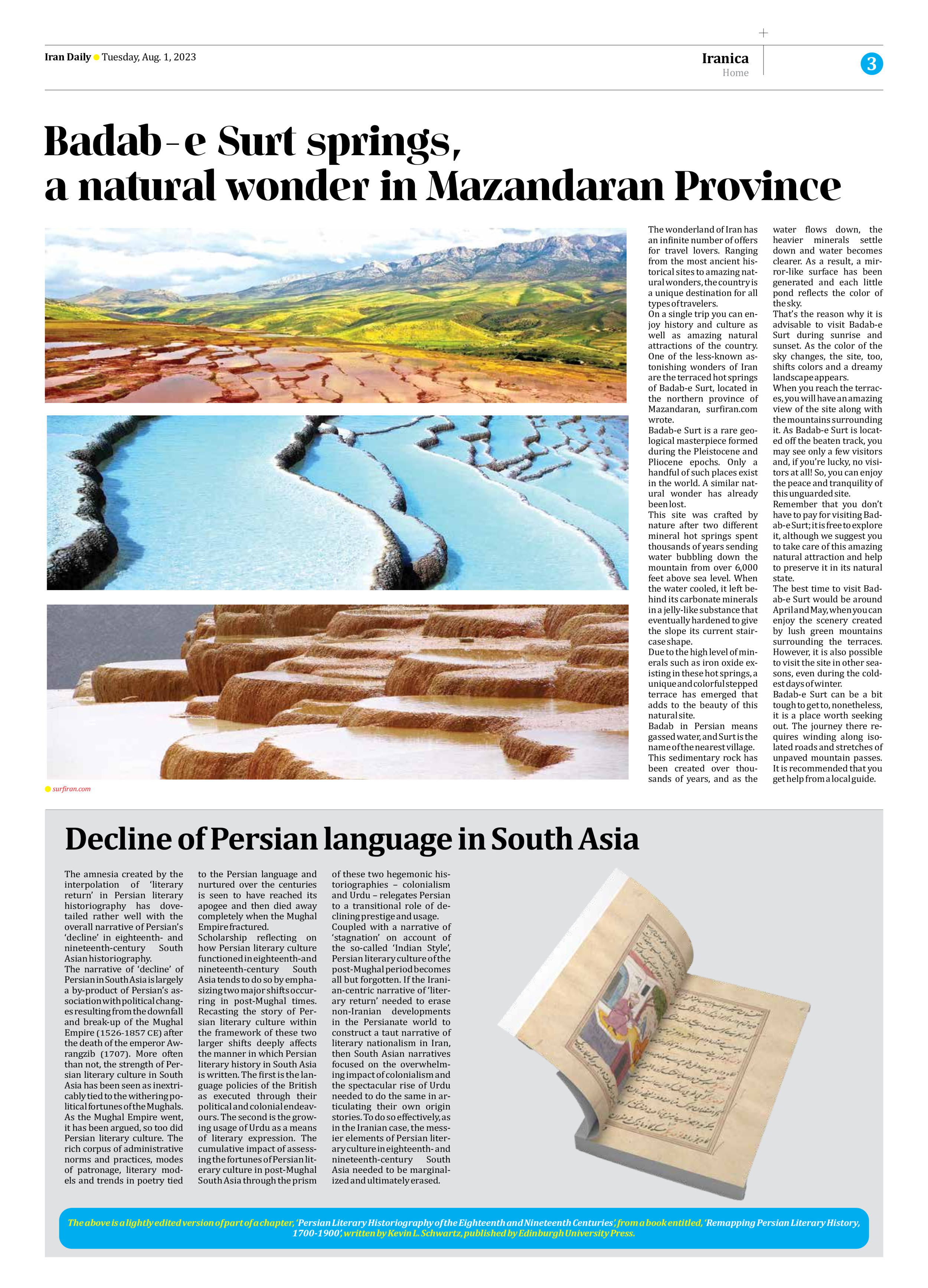
Decline of Persian language in South Asia
The amnesia created by the interpolation of ‘literary return’ in Persian literary historiography has dovetailed rather well with the overall narrative of Persian’s ‘decline’ in eighteenth- and nineteenth-century South Asian historiography.
The narrative of ‘decline’ of Persian in South Asia is largely a by-product of Persian’s association with political changes resulting from the downfall and break-up of the Mughal Empire (1526-1857 CE) after the death of the emperor Awrangzib (1707). More often than not, the strength of Persian literary culture in South Asia has been seen as inextricably tied to the withering political fortunes of the Mughals. As the Mughal Empire went, it has been argued, so too did Persian literary culture. The rich corpus of administrative norms and practices, modes of patronage, literary models and trends in poetry tied to the Persian language and nurtured over the centuries is seen to have reached its apogee and then died away completely when the Mughal Empire fractured.
Scholarship reflecting on how Persian literary culture functioned in eighteenth-and nineteenth-century South Asia tends to do so by emphasizing two major shifts occurring in post-Mughal times. Recasting the story of Persian literary culture within the framework of these two larger shifts deeply affects the manner in which Persian literary history in South Asia is written. The first is the language policies of the British as executed through their political and colonial endeavours. The second is the growing usage of Urdu as a means of literary expression. The cumulative impact of assessing the fortunes of Persian literary culture in post-Mughal South Asia through the prism of these two hegemonic historiographies – colonialism and Urdu – relegates Persian to a transitional role of declining prestige and usage.
Coupled with a narrative of ‘stagnation’ on account of the so-called ‘Indian Style’, Persian literary culture of the post-Mughal period becomes all but forgotten. If the Iranian-centric narrative of ‘literary return’ needed to erase non-Iranian developments in the Persianate world to construct a taut narrative of literary nationalism in Iran, then South Asian narratives focused on the overwhelming impact of colonialism and the spectacular rise of Urdu needed to do the same in articulating their own origin stories. To do so effectively, as in the Iranian case, the messier elements of Persian literary culture in eighteenth- and nineteenth-century South Asia needed to be marginalized and ultimately erased.
The above is a lightly edited version of part of a chapter, ‘Persian Literary Historiography of the Eighteenth and Nineteenth Centuries’, from a book entitled, ‘Remapping Persian Literary History, 1700-1900’, written by Kevin L. Schwartz, published by Edinburgh University Press.







